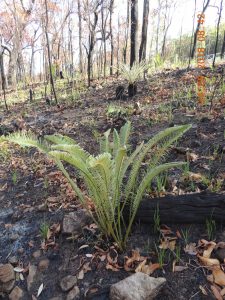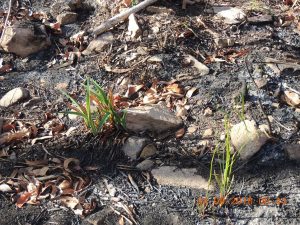Most Paluma residents will tell you that they never tire of driving the Paluma Range Road. While the road often invokes fear and trepidation for new visitors and tourists, you will very often hear the locals talking animatedly about their observations and encounters along the road, whether it be with native fauna and flora, other road-users, fallen trees, floods and fire. Some long-time residents know the road culvert by culvert – from top to bottom.
Driving the Range Road in the warmer months of the year and during the wet season is always special. Very often there is water cascading down the rock faces adjacent to the road and beautiful waterfalls at the creek crossings. Sometimes the water is even streaming down the middle of the road! If you are lucky you might encounter reptiles such as large pythons, water dragons and freshwater turtles during your drive. In certain months of the year, it is possible to spot migratory bird species such as the paradise kingfisher in particular locations along the road.
Being on the Range Road in the dry season is just as remarkable. With the recent prolonged dry spell in the region, just a few short weeks ago an intense bushfire ravaged the terrain on the lower slopes and foothills of the Paluma Range. Following the fire it was difficult to spot any greenery in the bush and hardly a blade of grass was left intact. It was hard to imagine how the bush would recover from such a devastating blaze.
Less than one month later and the bush is regenerating with a vengeance. Driving the Range Road at the present time is an absolute joy. There are green shoots and new growth everywhere as the bush springs back to life. It is well known that the Australian bush needs fire for regeneration and there are many species of native plants reliant on regular firing regimes to promote new growth and for seed germination. The resilience of the bush and its adaptability to fire is well evident on the Paluma Range at the present time.

Among the many plants springing back to life are Eucalypts of various species, cycads (probably Cycas media) and grass trees (Xanthorrhoea sp.). The cycads are especially beautiful with their new, soft grey-green foliage unfurling from blackened stumps. Understory plants such as pandanus palms (Pandanus sp.), wombat berry (Eustrephus latifolius) and flax lily (Dianella sp.) are rampant with new growth on the charred, hard-baked clay soils and amongst the granitic outcrops.

Next time you drive the Range Road make sure you look for the ever-advancing tinges of green as the woodland forest springs back to life. This is ‘mother nature’ at her very best.

Text & Photos by Michele Bird
